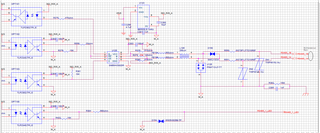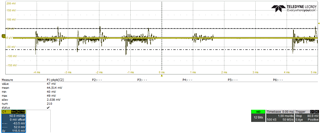hi,
During the operation of SN65HVD82, the dynamic current sending data causes voltage adjustment fluctuations in the isolation power supply, with peak to peak values around 200mV. Will this situation affect communication? What is the range of power supply fluctuations that will affect communication?
The schematic diagram is as follows:

The fluctuation of power supply is as follows:

Thanks!

